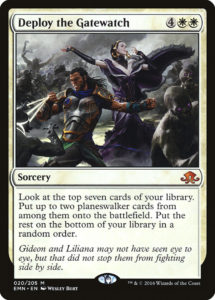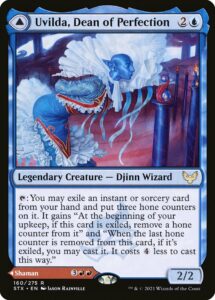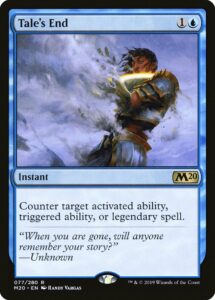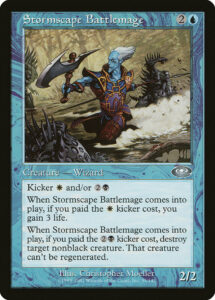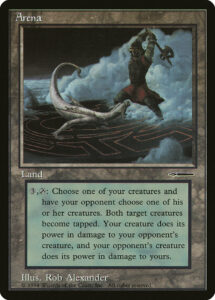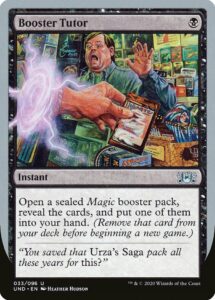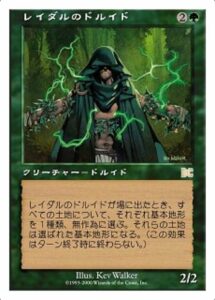Every summer, I get excited for my favorite Making Magic article: Mark Rosewater’s annual State of Design column. It’s an opportunity to reflect on the past year of Magic design as Magic’s most prominent design voice assess its triumphs and lessons for improvement. Last year’s was rather unusual, both due to the world turning upside down and how much focus was given areas Magic MaRo doesn’t (seem to) work on or control. In two weeks, we’ll likely be getting this year’s installment and see how much it resembles 2020’s oddball one.
In anticipation, I’d like to take the opportunity to do something personal and consider the state of Magic as it exists to me. I recognize Magic is a game for millions of people, each with different desires—many of which overlap, many of which contradict, and some of which are in tension with Wizards of the Coast’s needs and goals. But I also know that I’m not alone in my feelings. There are ways in which Magic has done very well by me, areas in which Magic has expanded beyond me, and aspects which were meant for me but missed the mark.
The 2020 expansions
The past year had consistently good-to-outstanding sets. Sure, I really don’t enjoy Adventures in the Forgotten Realms, but it’s sort of a Core Set (which I tend to not enjoy, though Core 2021 was swell). I have concerns about diminishing archetype density in draft, but that’s a great track record nonetheless. More importantly, Wizards demonstrated its commitment to players like me who love higher power level, higher complexity Limited formats (and will accept a higher price point for them) with Double Masters, Time Spiral Remastered, and Modern Horizons 2. If I’d been able to safely play paper Magic, this might have been the best year ever for me in terms of set releases.
While I’m going to do a fair bit of nitpicking in this article, I cannot stress enough that this praise is more meaningful than any complaining I’ll do. In my book, Wizards excelled at its bread-and-butter job, making great Magic sets. That’s an inversion from 2016-2018, when I enjoyed most aspects of Magic except for the absolutely essential: playing—and purchasing—each premier release. Yes, there are things I’d have changed about the year, most notably the tiny number of functional archetypes in Strixhaven, Kaldheim, and Zendikar Rising, but if Wizards manages to do only 70% as well next year, it’ll still be a banner year for me.
Cross-set cohesion & MDFCs
Ever since three set blocks ended with Dragons of Tarkir and especially since the Two Block Paradigm ended with Rivals of Ixalan, Magic has struggled to avoid Set Monsters—Standard decks that hardly change with each release. Mechanics are a root cause. Since most (non-evergreen) mechanics only show up on single set, decks built around that mechanic mostly only pick up versatile tools (like removal), mana fixing, and sideboard cards and otherwise cannot change. Y’know, decks like Temur Energy, Temur Adventures, and Temur Reclamation. This issue was exacerbated in 2020 by Throne of Eldraine’s high power level crowding out most sets.
To address this, Magic employed an old idea: employ the same (non-evergreen) mechanic in every set. This gives texture to the year as a whole and creates synergy between sets. This had never been done across consecutive worlds, but had worked in the past. Wizards chose Modal Double-Faced Cards, using them as a major set theme in Zendikar Rising and on a small number of rares and mythics in Kaldheim and Strixhaven.
I’m curious what MaRo will say about this experiment. I’m not certain what the metrics are for success, especially since many of the Kaldheim gods and Strixhaven deans seem more designed for Commander than for Standard. But if a primary goal was to create a more cohesive Standard, MDFCs did not and could not bear that weight. It’s a modular mechanic with no build-arounds and almost no synergies (apart from flickering and the now-errataed interaction with Valki, God of Lies and Cascade).
It seems strange employing MDFCs the year leading into two Innistrad sets which are almost certain to use Transforming DFCs. In the past, WotC sparingly used DFCs because of their expense and them being a polarizing (but generally beloved) mechanic, but perhaps Magic Arena’s prominence alleviates the latter and new printing technology the former. Reflecting on MDFCs, it feels like Wizards swerved after Zendikar Rising. MDFCs with spells on both sides were wordy and couldn’t be done in high volumes, making them a poor choice to create cohesion. But perhaps WotC abandoned the experiment when the challenges of MDFCs collided with the waning importance of Standard and recognition that a power level reset was necessary.
Magic’s Story
The less-than-stellar state of Magic’s story came up several times in 2020’s State of Design. It’s worse now.
It’s been three years since I regularly enjoyed Magic fiction. It’s been two years since I stopped reading it actively. Today, Magic’s story is all but dead to me. I was delighted that Kaya was the protagonist of Kaldheim’s storyline and Vorinclex the antagonist, but sadly was bored actually reading the story. The same applies to Zendikar Rising’s story—I like the characters, but the conflict and writing failed to engage. I skipped Strixhaven’s entirely, given its antecedents and how bungled the character of Killian Lu was. Magic seems to be building to an event given its reintroduction of the Phyrexians and repeated use of Lukka, Rowan, and Will, but I don’t know or care where it’s trying to go.
2021 feels a lot like 2010. The cards and books contradict each other, the stories are panned and ignored. I no longer have an emotional connection to the activities of Magic’s characters, nor am I excited about what new plot twists may come down the bend. War of the Spark unceremoniously ended every character interaction Magic had been building since Battle for Zendikar. Since then, it’s squelched from one setpiece to the next. It’s sad and frankly surprising—there’s ostensibly an upcoming Netflix series, so one would think featuring and building up its primary characters would be a priority.
Ultimately, it’s up to Wizards to determine whether the cost of creating quality fiction is worth its advertising and engagement value. Magic has an incredibly strong brand, but it’s unclear whether it actually has a strong IP. And speaking of that…
WotC Videogames
2021 began with a bang. Wizards of the Coast was formally absorbed into Hasbro and tasked with overseeing a suite of videogame studios. So far this year, it has released Dungeons & Dragons: Dark Alliance to general disdain and the already-cancelled Magic: Legends. While many of those games’ issues may not be Wizards of the Coast’s fault, it’s hardly a sensational start. This follows in the wake of previous announced-then-cancelled projects like Valor’s Reach.
Wizards simply doesn’t have a strong track record of quality videogames, and part of this stems from a fundamental issue with Magic: the Gathering. Magic is a strong product, having wide appeal and brand awareness. As an IP, it’s niche, existing mostly for fans of the game. Creating games (or an animated Netflix series) based on Magic’s IP but not its actual gameplay plays to Magic’s weaknesses, not its strengths. That’s why 1997’s Battlemage was mediocre but Microprose’s contemporaneous Magic: the Gathering excelled.
Next month, League of Legends launches its Netflix series. A character-focused series plays to League’s strengths—not only has Riot invested in making characters appealing beyond its games, but League’s gameplay is centered on those characters. Magic’s gameplay, on the other hand, does not and cannot focus heavily on its characters, making them harder to harness outside of direct Magic experiences like Arena. Factor in Magic letting its primary characters lie fallow for three years (barring an overstuffed, underwhelming extravaganza in War of the Spark), plot inconsistencies (like forgetting to kill Niv-Mizzet before reviving him), and a lack of support for its creative team, and Magic will remain disadvantaged in creating quality games based on Magic that aren’t literally the game.
And while we’re on the subject of digital games and playing Magic…
The State of Arena
Arena is in a weird place. It features multitudinous ways to play the same formats, creating a bizarre situation where it has too many and too few options. Offering ranked and unranked, best-of-one and best-of-three, makes it so players can customize their experiences but only play Standard, Historic, current-set draft, and one or two other formats (with Historic Brawl now becoming a perennial option). Condensing these options would likely maintain lightning-quick queue times, clarify Arena’s offerings, and allow for a greater diversity of formats, but at the cost of frustrating large swaths of the player base.
I’m bored by how slowly Arena cycles through its Limited offerings. I’d love to have Cube, Remastered sets, or great draft formats like Dominaria always in the rotation rather than four flavors of [current draft format]. But I wouldn’t trade that for BO3 draft or drafting with humans. I’m not confident there’s an easy solution better than maintaining the status quo, but the status quo is problematic.
I’m also concerned that Arena’s developers no longer have the necessary resources to keep ahead of its bimonthly releases. Nothing’s gone terribly awry, but there are little things that remind me the platform is three years old and not getting any younger—mythics no longer all have unique animations, the Strixhaven avatars lack voice acting, and battlefields have less fidget interaction and juice. I worry that Arena’s already well into the duct tape phase of programming, where merely adding seasonal content requires almost all available resources and improvements and maintenance fall by the wayside out of necessary triage.
Boosters
Let’s talk about something different and one of the best parts of Magic: boosters.
The global shipping industry is deeply disrupted. Paper is more expensive, making life hard for the tabletop games industry. The pandemic repeatedly disrupted how people can safely play games. All these factors have made Wizards unable to meet the demand for booster packs. Production has shifted to manufacture Set Boosters and Collector Boosters, products less impacted by people being unable to congregate for Limited. Accordingly, Draft Booster boxes have been in short supply, having a ~40% price premium for the month following Strixhaven, MH2, and AFR prereleases. This is a frustrating but hopefully temporary issue. But there’s no shortage of Set Boosters, and I’m suspicious of that.
Collector Boosters aren’t for me, and that’s fine—they keep prices down and give collectors more things to chase for. Their unique selling point, Extended Art cards, have been improved. They no longer have smeared, zoomed-in artwork, though this now means most rares have crowded art boxes, since their art is designed to fit Extended Art boxes and cropped in the normal Magic frame. That’s a minor cost to pay. But I’ve got actual issues with Set Boosters, the new booster innovation from 2020.
I’m not sure who Set Boosters are for. Collector Boosters are the packs that are meant to be cracked. Are Set Boosters the budget version? Their only unique selling point is The List, a confusing, constantly changing collection of random cards. Next year, they’ll finally contain a coherent value add: in-universe versions of Universes Beyond cards. That boon will put them in competition with Collector Boosters. I’m fine with Wizards experimenting with more forms of boosters (though Double Masters VIP boosters were excessively wild) but Set Boosters are in such high supply that stores are giving them out as event prizes rather than Draft Boosters (which they’re saving for events), and stores are no longer allowed to sell Draft Boosters on prerelease weekend, but Set Booster boxes are fair game. It’s feeling like I’m being pushed to acquire Set Boosters even though I want Draft Boosters.
I’m skeptical that Set Boosters’ prominence is merely due to Wizards guessing at player demand. They seem engineered to make packs more profitable despite their price point plateauing for a decade. Set Boosters contain 12 cards per pack (rather than Draft Boosters’ 15) and only 30 packs per box (rather than 36). That’s 33% less content at the same price point. Now, I’m fine with Wizards creating new products to better suit certain players and finding better ways to monetize its existing products—I’m in the industry and accept that businesses need money. But I’m not the target demographic for Set Boosters. I feel like I’m having my arm twisted to buy something I don’t want because it’s more profitable. The end result is I’m buying less product (because Draft Boosters are overpriced and often unavailable) and playing other games more.
Everything else
As we wrap up, let’s quickly touch upon regular topics in States of Design or the community discourse in general.
Endless spoiler season. Wizards has finally found an answer: inundate players with so much content that people finally filter out products not meant for them. It’s been a growing pain of Magic expanding its target audiences, but I think players are learning to distinguish stuff not meant for them and tune it out.
Competitive Magic. At some point, it’ll be safe for events like CommandFests and Grands Prix to return. We’re not there yet. It’s sad not knowing what’s coming down the bend or whether there’ll ever again be an engaging Pro scene to follow, but it’s not like people were pleased with professional Magic these past few years.
Digital-only cards. It’s not surprising Wizards finally went this route, but it’s odd to design multiple cards needing to be immediately banned in Historic Brawl. It makes me worry about Wizard’s communication (amidst other internal issues).
While I’ve definitely got concerns about Magic’s future and issues with its past year, it still was a big success in my book. I know I spoiled that at the beginning, but Wizards excelled at its primary job: making great Magic sets. Sure, I’d love it if I were engaged by the story or MH2 were a bit cheaper, but minor shortcomings don’t invalidate major successes. I look forward to hearing MaRo’s take and how the past year was seen inside the building. Though I wouldn’t mind if he skipped extolling their record-breaking profits again unless it’s clear how design specifically generated them.
Zachary Barash is a New York City-based game designer and the commissioner of Team Draft League. He designs for Kingdom Death: Monster, has a Game Design MFA from the NYU Game Center, and does freelance game design. When the stars align, he streams Magic (but the stars align way less often than he’d like).

